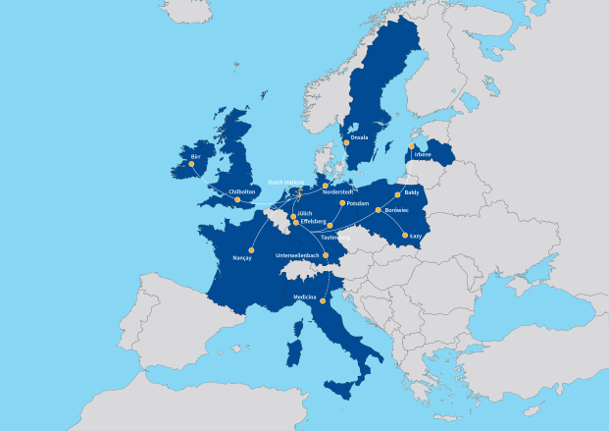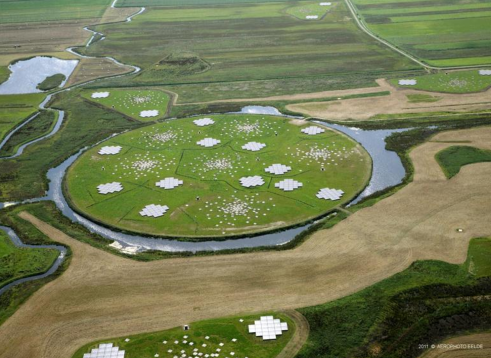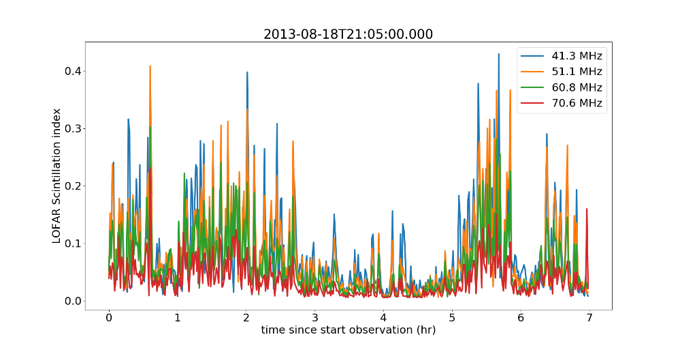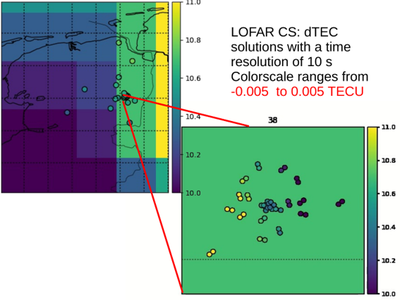TNA to LOFAR Node
LOFAR: low frequency radio telescope, operating at frequencies between 10-80 MHz and 110-250 MHz. Several stations, each consisting of many (48/96) dipole antennas. Dense core (baselines <3km, 24 stations) and 14 remote stations (baselines <100km) in the North East part of the Netherlands. Several international stations throughout Europe (Ireland, UK, Sweden, Germany, Latvia, Poland, France, Italy).

Designed for radio astronomy, very suitable for ionospheric research.

LOFAR: World’s largest and most flexible low frequency radio telescope
Database of ionospheric amplitude scintillation data of a bright radio source. Single station data of multiple stations. Access to small scale structures and velocities thereof, by combining data from multiple core stations (python scripts).

Amplitude scintillation

Scintillation index
Other (more experimental) data products:
- TEC gradients (mTECU accuracy) from existing calibration data
- Direct fast (1 min) imaging of large ~500km FOV TEC gradient structures (limited number of existing observations), including mTIDs/field aligned wavelike structures

Data access
- Data from the LOFAR node can be accessed through the Long Time Archive (LTA) of LOFAR;
- Full database of existing scintillation data needs to be established;
- New data can be requested through the LOFAR proposals (2 cycles per year, reviewed by external committee; success depends on scientific content and feasibility of the proposal – coordination with the LOFAR Solar and Space Weather Key Science Project strongly recommended).
- Some observations can be done in parallel to astronomical observations.
- Ionospheric scintillation at low radio frequencies:
- Assessment of any association with scintillation seen by GNSS.
- Assessment of any association with large-scale structures (e.g., TIDs) detected and modeled by other instruments.
TNA to LOFAR Node info (downloadable pdf file)
Contact persons: Dr Maaijke Mevius (mevius@astron.nl), Dr Richard Fallows (fallows@astron.nl)
